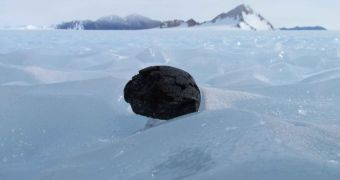A team of scientists is currently camping fairly close to the South Pole, on a distant Antarctic glacier where very few, if any, humans have ever treaded. The goal of the expedition is to discover as many meteorites as possible, preferably of the kind produced early on in the history of the solar system.
Our Sun is around 4.6 billion years old, while Earth is some 4.5 billion years old. As the inner and outer planets formed, debris from the dust ring around the Sun also coalesced into smaller structures, such as meteorites, asteroids and comets. Some of these objects made their way to our planet as well.
The purpose of the Antarctic expeditions, usually carried out during the southern hemisphere summer, is to find as many of these space rocks as possible. Each day, researchers camping out just 800 kilometers (500 miles) away from the South Pole take off on snowmobiles to search for meteorites.
These objects appear as tiny black specks on the white vastness of the glaciers, so they are very easy to discover. Once the expedition concludes, all collected meteorites will be delivered to the NASA Johnson Space Center, in Houston, Texas, for further analysis.
The research expedition is based at the Case Western Reserve University (CWRU), in the United States, and included scientists from multiple universities, including Brigham Young University (BYU).
One of the most interesting aspects of the meteorite search is knowing that these objects have remained exposed and undisturbed in Antarctica for several millions of years. Not all of them landed recently, and some have been here a long while, NPR reports.
The harsh coldness of the Southern Continent preserves these meteorites just like any deep freezer would. “As soon as you see that dark black fusion crust on the outside, you just get so excited. Everyone jumps up and just starts waving their hands,” Jani Radebaugh says of finding a meteorite.
“The only thing I can hear is the popping of the glacier underneath me. You're sitting on a giant, moving body of ice. And sometimes you forget that, until you hear the pops and groans. It's really magical,” adds the expert, a BYU member of the expedition team and a planetary scientist at the university.
Over the past few decades, researchers have collected no less than 20,000 meteorites from Antarctica. All of them have contributed extensively to increasing our knowledge about planetary formation and the early history of the solar system. The more of these objects scientists uncover, the more mysteries about the distant past are uncovered.

 14 DAY TRIAL //
14 DAY TRIAL //